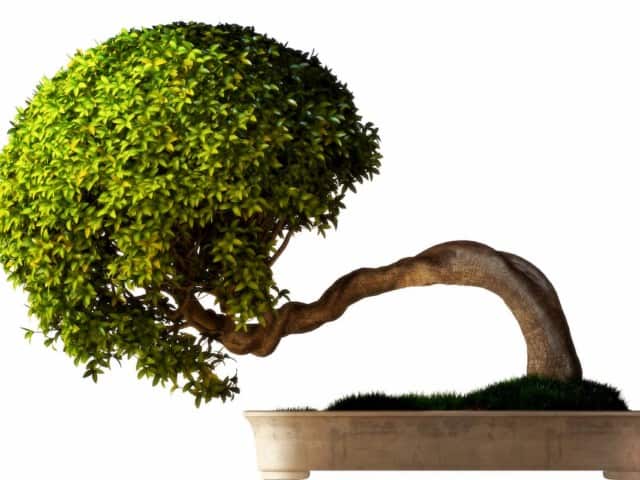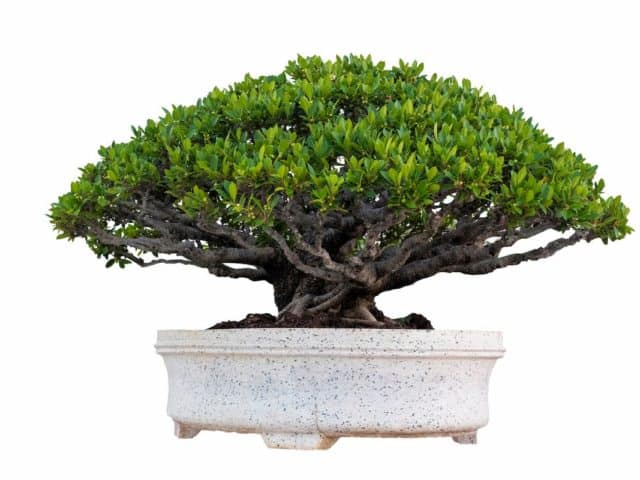Bonsai is simple, but there are some technical details that people new to it need help understanding. Selecting the right tool for bonsai is important, but so is choosing the right time to prune your trees.
If you’re looking for information on the pruning schedule and how often you should prune a bonsai tree each year, then you came to the right place.
How often you need to prune a tree depends on the climate you live in and the kind of tree you have. How much you prune a tree also depends on the tree’s type. Usually, you would want to prune a tree right at the start and at the end of its growth period.
There’s a reason why you’d want to prune your trees at these times. Some trees require small pruning sessions all year round and some need a few times a year.
I’ll be explaining all you need to know about these time cycles and how to tell if your tree needs good pruning, so please read till the end to find out more.

How to Tell If Your Tree Requires Pruning?
Before we get into how many times you need to prune a bonsai, let’s talk about how pruning affects the growth of your tree. If you’re clear about what it does, you would be able to tell when your tree needs pruning.
We know that trees grow more towards the outer edges of its canopy and the top to get more sunlight and nutrients. They have the innate quality of wanting to rise above their surroundings.
But in bonsai, we have to halt that growth by trimming out these overgrown parts periodically to ensure that the base grows thicker.
If you don’t prune the higher stems, then the inner parts of the branch structure will start to die out as the tree spends most of its resources on the edges. Then you will have to deal with dead stems, and you certainly do not want that in bonsai.
Here’s a list of things you would want to remove by pruning your tree.
- Branches that obscure the view of the tree trunk.
- Dead stems and branches
- Branches that grow side by side
- suckers, both the high and low ones.
- Stems and branches that cross over each other and cause friction.
- Branches that start growing from the base of the tree.
- Branches that grow downwards
Ideally, when you see too many of the things I just mentioned above, you should plan for a pruning.

Types of Pruning and When To Do Them
Pruning isn’t just about removing dead branches or cutting out overgrown stems. There are two different types of pruning. The first one is maintenance pruning and the second type is Structural pruning,
Maintenance pruning
Maintenance pruning is very simple. It’s mostly about removing suckers, dead branches, and stems, or overgrown stalks that look out of proportion with your bonsai.
How often you need to do this depends on the kind of tree you have, but you can generally tell just by looking. If your bonsai looks overgrown and unruly, then it’s probably the time to get those shears out and get some light pruning done.
Structural pruning
Structural pruning is less about tidying up your bonsai and more about giving it the desired shape. That is where you would want to cut down perfectly healthy branches to help the tree grow the way you want it to.
Before you get into it, first do a light maintenance pruning to have all the dead stems and dry leaves removed so that you have a clean tree to work with. Then you can go ahead and cut out the unsightly bits of stem and water sprouts.
You would also want to remove branches that are growing inward. Also, be sure to remove the branches that are too close to the ground as they will eventually end up touching the dirt, and it overall looks unsightly.
You could also use some wire on the trees to give it the shape you want during structural pruning. Don’t just prune the top too much, as that may kill the tree.
You can tell when a structural pruning is in order by looking at your bonsai. If the tree has too many haphazardly grown branches you might want to do a pruning then.
But be warned, you must always keep in mind the yearly growth cycle before doing a sizable structural pruning. Trees need to recover from the loss of too many branches and doing it before a growth period helps it heal faster.
Yearly Growth Cycle
If you’re new to bonsai, then you need to know about this cycle. All of the pruning and maintenance you do on your bonsai should be done with the growth cycle in mind. It is especially helpful to know about this for structural pruning.
For the majority of the trees, they have their growth periods right as winter ends. Trees lay dormant during the colder months because the low temperature stops their growth.
They also lay dormant during the summer if the weather is too hot. In between these two seasons is when a tree usually has its growth period every year.
Some tropical trees tend to grow slowly all around the year. Another thing to keep in mind is that these periods are not constant for all the trees you see in bonsai. Some of these trees have growth periods as short as a mere week, and some trees can stretch this over a couple of months.
How the Yearly Cycle Affects Pruning
Growth cycles are good and all, but what does it have to do with pruning? It has everything to do with pruning. You have to time your pruning session based on these growth periods and dormant periods.
Dormancy
When a tree lays dormant, usually in the middle of winter and high summer, you don’t need to prune your trees much.
Sometimes you don’t even need to prune them at all; just regular fertilizing the soil and watering would be enough to keep them pristine. At most, you may need to clear out some twigs.
Rejuvenation Period
On the other hand, you must prune your trees right when the growth starts after winter, as this is what dictates how your tree would grow during the growth period.
You’d remove dry or unwanted branches, leaves and maybe even put some wire to help shape the tree in its growth period.
You have to repeat the process at the end of its growth period too. It is more of a finishing touch to your previous work. It ensures that the tree stays in the desired shape.
It is also the time you need to remove the wire if you put any on the tree. Wire won’t help it much after it has already taken shape and would look unsightly.
There are some species of trees, especially tropical variants, that keep growing constantly. They tend to grow a bit more during the usual growth periods, but they keep their constant growth pace all year.
These trees tend to grow too much if you leave them unchecked for too long. Ideally, you should trim and prune them on a semi-regular basis.
You can find the specific pruning time if you look up the type of tree you have. That is a pretty broad topic, as every tree has specific timers. So be sure to check that out. But keep in mind that all of them follow this general growth cycle.
Final Thoughts on How Often You Should Prune a Bonsai Tree
When you choose to grow a bonsai tree you will find that you do need to prune it to keep it looking clean and pristine, many time this wrong and cause harm to their trees.
Taking the time to understand what is the proper time to start your prune can lead to an amazing looking tree and decades of gardening bliss, make sure to use the proper tools like scissors and keep at it.
If you are just learning about bonsai trees and looking to purchase high quality trees that will likely live longer than you then I would highly suggest checking out Bonsai Boy Trees as they are a long lasting New York business that provides trees for all price ranges!






